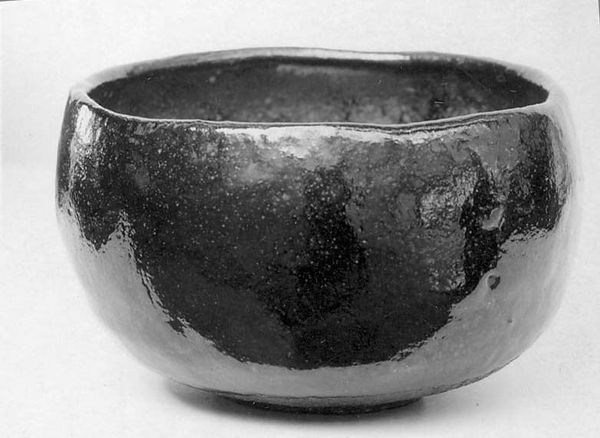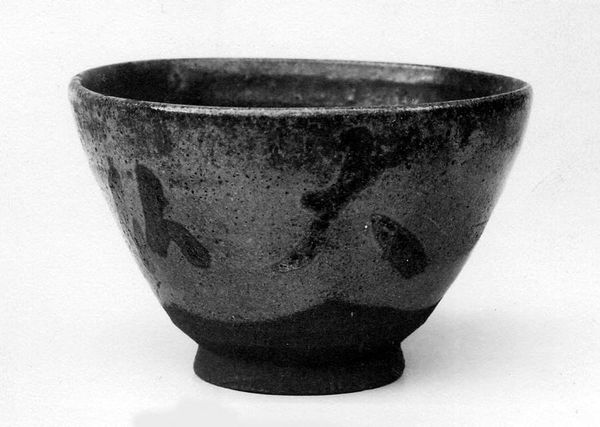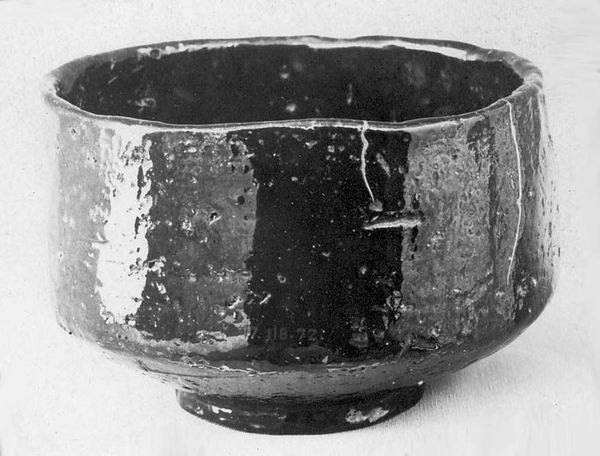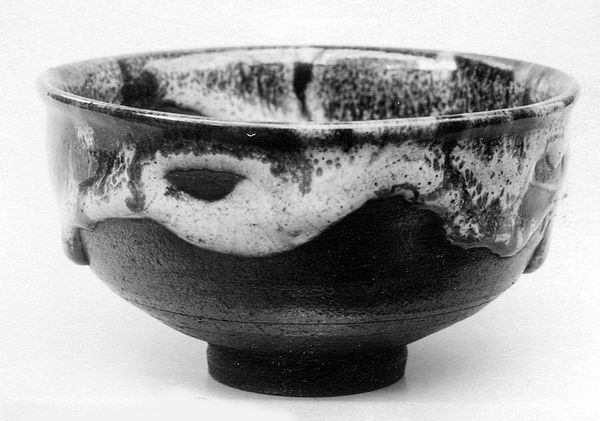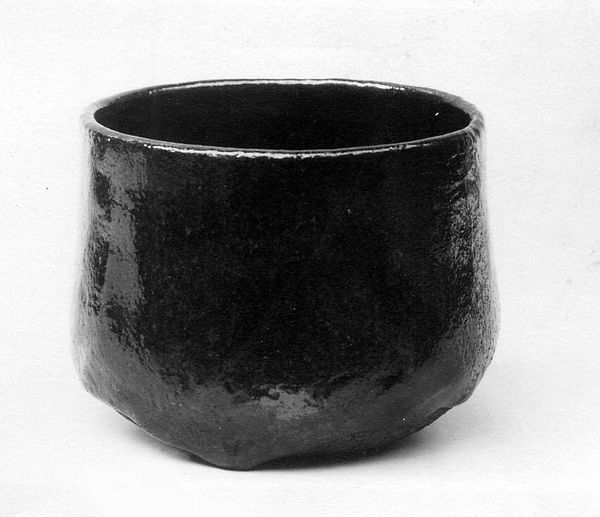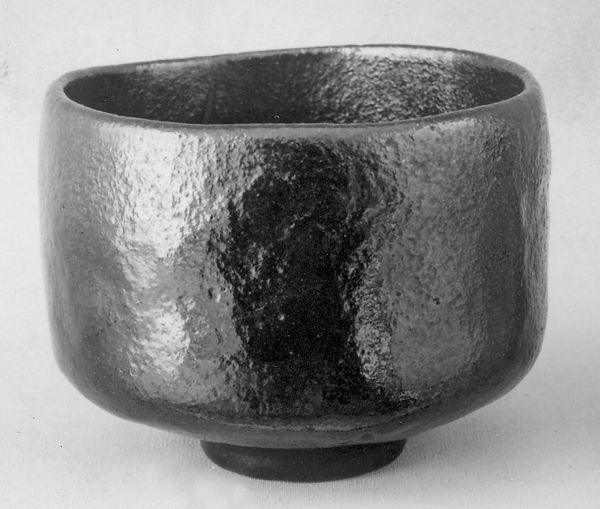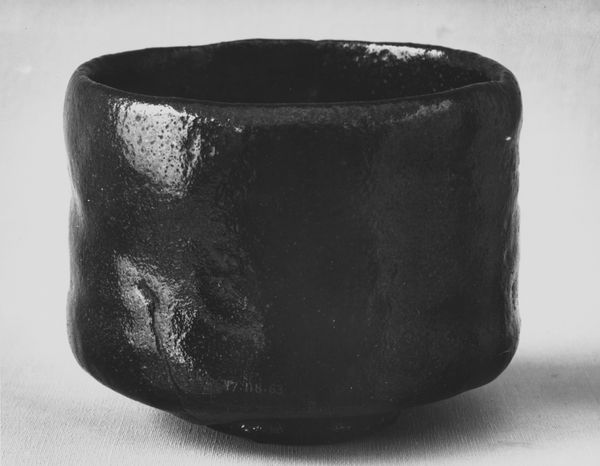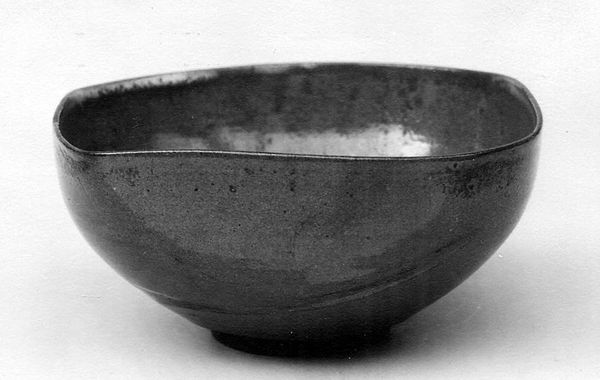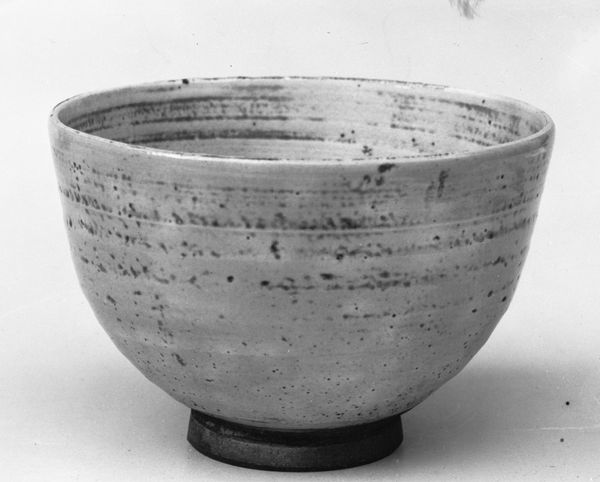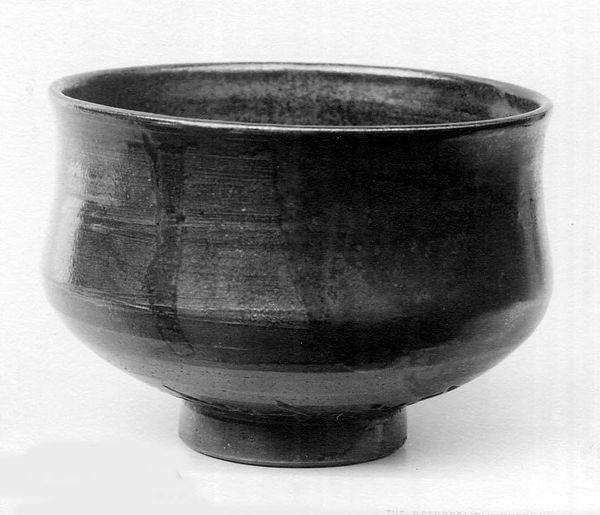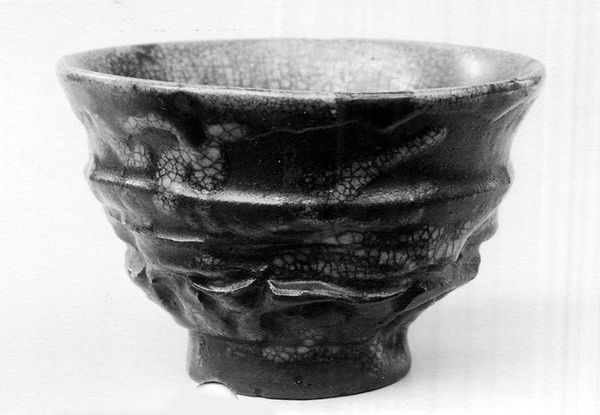
ceramic, earthenware, sculpture
#
asian-art
#
ceramic
#
earthenware
#
sculpture
Dimensions: H. 3 1/4 in. (8.3 cm); Diam. 5 in. (12.7 cm)
Copyright: Public Domain
This teabowl was made by Tokunyu sometime between 1675 and 1775, most likely in Japan, from a low-fired ceramic known as raku ware. Raku is known for its immediacy; the porous clay body and soft glaze undergo rapid firing, often in small, portable kilns. The removal of the wares while still glowing hot contributes to the dynamic surface effects. You can see that in the variegated colors and textures here, a testament to the maker's intimate control of the process. While raku is closely associated with Zen Buddhism and the Japanese tea ceremony, its influence has spread far beyond these traditions. It's a reminder that even the simplest of objects can be a powerful expression of the alchemical relationship between maker, material, and fire. And that the amount of work involved in the production process impacts the final result.
Comments
No comments
Be the first to comment and join the conversation on the ultimate creative platform.
